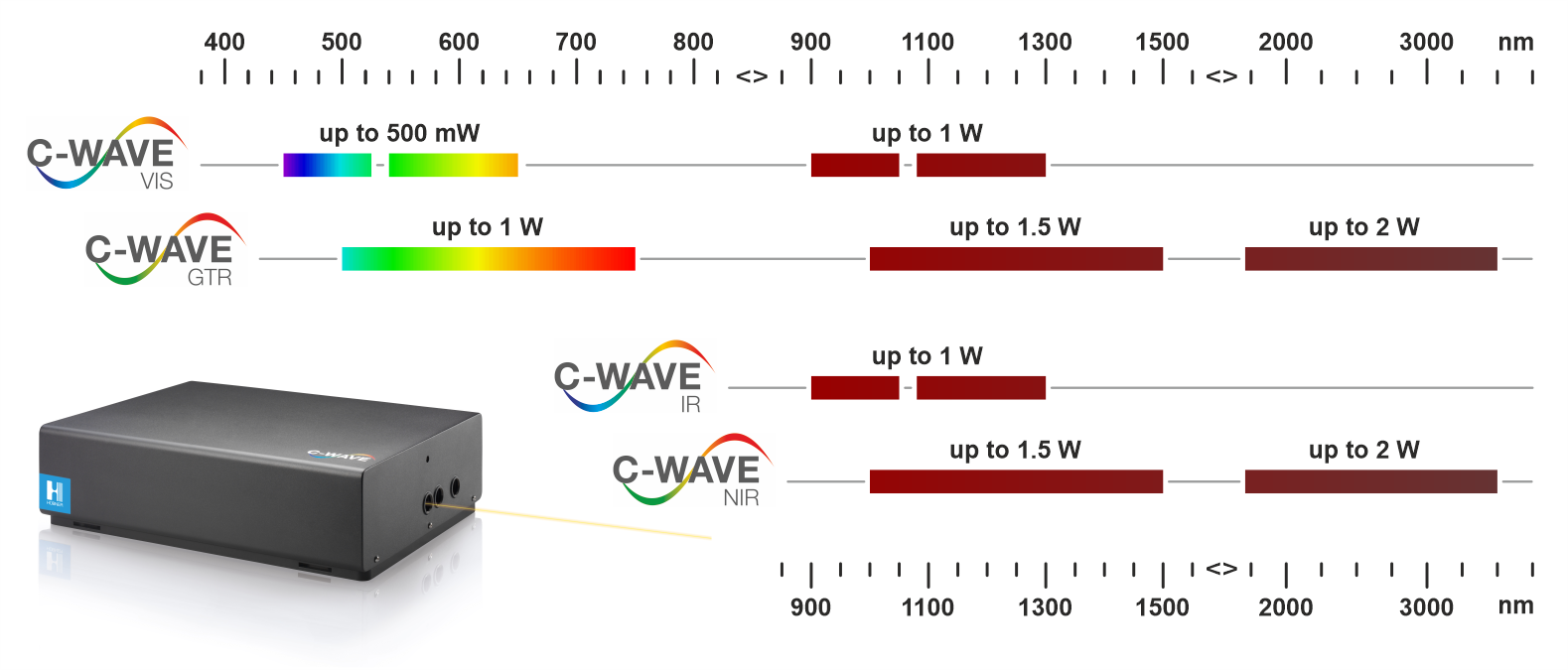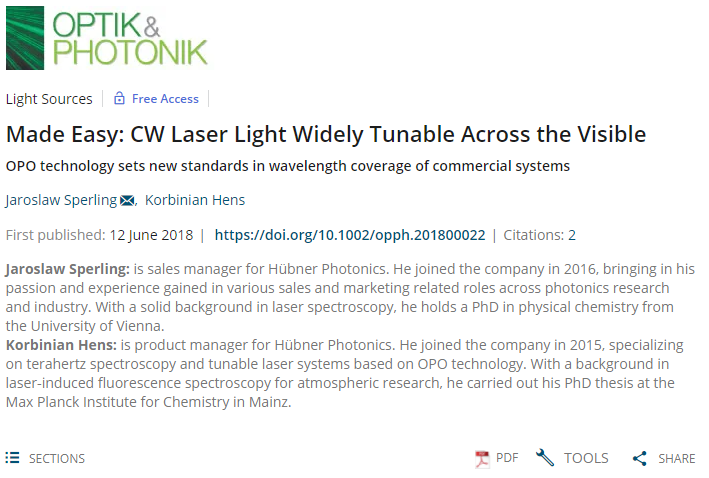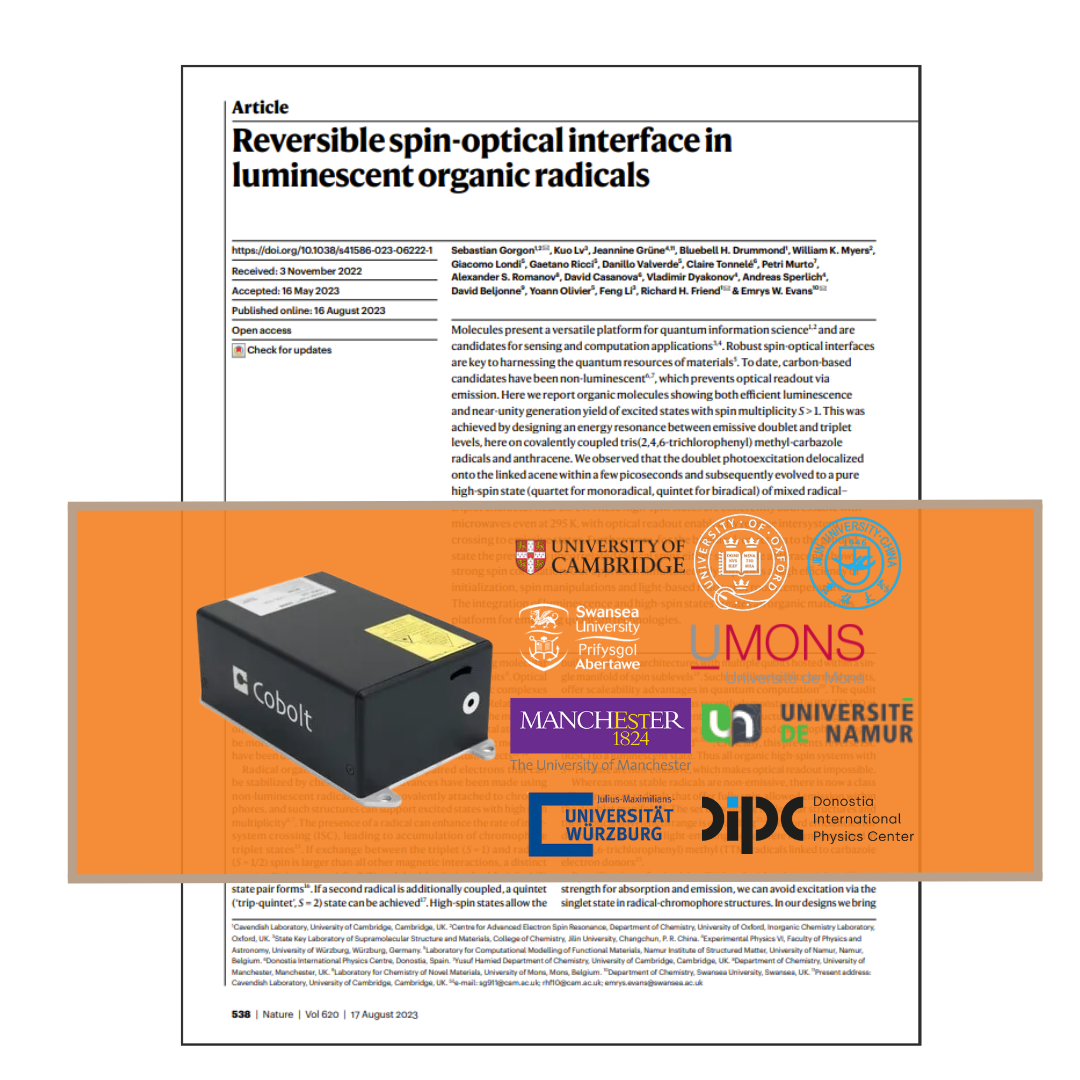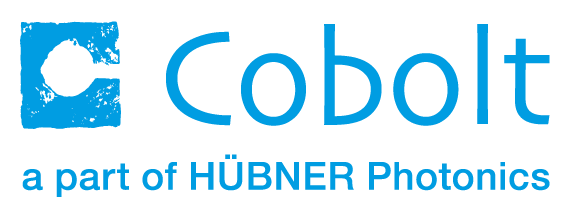3 March, 2021
Widely Tunable CW Laser Light
How OPO technology sets new standards in CW tunable laser light
A remarkable number of photonic applications call for continuous-wave (cw) laser light that is widely tunable throughout the visible range of the spectrum. However, this spectral region remains difficult to access with conventional tunable laser devices. This is why recently commercialized sources based on cw optical parametric oscillator or OPO technology gain market awareness – and become increasingly recognized as cost effective and user friendly turn-key solutions.
Only recently, there have been exciting advances in CW OPO technology, driven both by the emergence and increasingly sophisticated design of new nonlinear crystals, as well as the increasing availability of suitable high performance solid-state pump laser sources. These advances have spurred the practical realization of OPO devices with game-changing characteristics.
The huge potential of OPOs derives from their exceptional wavelength versatility, as they are in principle not limited by the wavelength coverage of suitable laser gain media [1]. They further allow output generation in all temporal regimes from continuous wave (CW) to ultrafast pulse applications. In practice, the OPO concept has been experimentally demonstrated already more than half a century ago [2], but the progress in research, development and commercialization of parametric devices has been stalled by several technical obstacles. Simply speaking, these obstacles have been easier to overcome at the high peak powers of pulsed devices, so that tunable OPOs operating in pulsed mode are nowadays readily available from a variety of commercial suppliers.
As the progress in CW OPO technology was lagging, the generation of widely tunable CW laser light in the visible range had to rely on conventional laser devices. In practice, this has been often equivalent to the necessity of changing laser gain media and resonator optics, to the handling of laser dyes, or to the acceptance of limitations in wavelength coverage. Their unique characteristics make CW OPOs highly competitive alternatives to conventional lasers and related technologies for the generation of widely tunable CW radiation. An example of the tunable range achievable using a commercially available system from HÜBNER Photonics is shown below:

The characterization of single-photon emitters and alike is thereby only a subset of applications, where OPO technology permits to conveniently carry out measurements that would have been otherwise hampered by the technical complexity of suitable sources, or even the lack thereof. An exciting variety of further applications is in preparation to be published.
[1] M. Ebrahim-Zadeh, Optical Parametric Oscillators, in Handbook of Optics Ed. 2, McGraw-Hill, Ed. 2 (2001)
[2] J. A. Giordmaine and R. C. Mills, Tunable coherent parametric oscillation in LiNbO3 at optical frequencies, Phys. Rev. Lett. 14, 973 (1965)
More resources
Explore our Publications for practical insights on how our customers are leveraging the power of our lasers in their projects.
Customer publications
Product line: Cobolt
Application: Quantum
Wavelength: 532 nm, Tunable VIS
New Discovery in Quantum Technology: Shining Light on Organic Molecules
scientists have developed organic molecules that can glow brightly and be used in advanced quantum technologies
Customer publications
Product line: Cobolt
Application: Quantum
Wavelength: 594 nm, Femtosecond 1um
Nanographene Research Unveils Highly Soluble Quantum Dots
Researchers have unveiled a new family of nanographene materials with the help of the Cobolt Mambo 594 nm laser.
Customer publications
Product line: Cobolt
Application: Fluorescence microscopy
Wavelength: 488 nm
New Breakthrough in Cellular Imaging with the Cobolt 06-MLD Laser
Scientists at the KTH Royal Institute of Technology in Sweden, and Calico Life Sciences, have made significant strides in cellular imaging.







